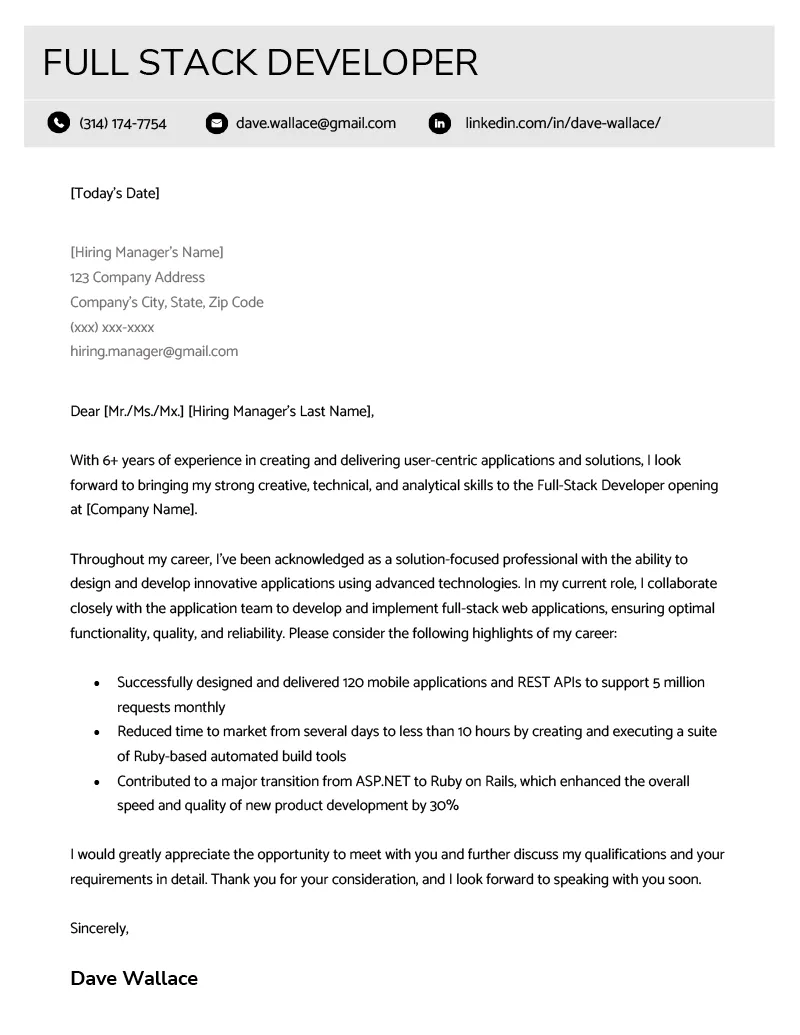Understanding the Importance of an IT Cover Letter
In the competitive landscape of information technology, a well-crafted cover letter is more than just a formality; it’s your first opportunity to make a strong impression. It serves as a crucial introduction, providing context to your resume and allowing you to highlight the skills and experiences that make you the ideal candidate. For IT professionals, a cover letter showcases not only technical expertise but also communication skills, which are essential for collaborating with teams and explaining complex concepts to non-technical stakeholders. A well-written cover letter demonstrates professionalism, attention to detail, and a genuine interest in the specific role and company. It can be the deciding factor in whether you move forward in the hiring process.
Why a Cover Letter Matters for IT Professionals
A cover letter provides a platform to elaborate on your resume entries, offering a narrative that connects your skills and experiences to the specific requirements of the job. For IT roles, this narrative is critical because it allows you to explain how your technical abilities align with the company’s needs. It lets you express your understanding of the company’s mission, culture, and how your skills can contribute to their success. It allows you to personalize your application, indicating that you’ve taken the time to research the company and tailor your application to the position. This personalization significantly increases your chances of getting noticed by the hiring manager. Also, it helps to fill any gaps or address any concerns the hiring manager may have after reviewing the resume.
Key Components of a Compelling IT Cover Letter
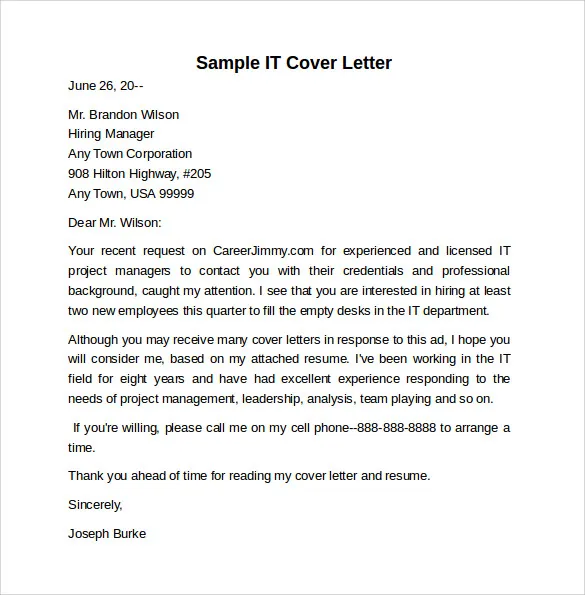
Your Contact Information and Date
Begin your cover letter with your contact information, including your full name, phone number, email address, and optionally, your LinkedIn profile URL. This ensures that the hiring manager can easily reach you. Place this information at the top of the letter, followed by the date. Be sure to use a professional email address. Using a professional and presentable header increases your chances of getting noticed. The date shows that you are applying recently and allows the hiring manager to see the date. A header with contact information should always be the first thing on the cover letter
Addressing the Hiring Manager
If possible, address your cover letter to a specific person. Research the hiring manager’s name and title to show that you’ve taken the initiative to learn about the company. A personalized greeting, such as “Dear Mr. Smith,” makes your letter more engaging than a generic opening. If you are unable to determine the hiring manager’s name, use a professional salutation, such as “Dear Hiring Manager.” Avoid generic greetings like “To Whom It May Concern.” The simple act of addressing the letter to a specific person can significantly boost your application’s appeal. It shows you’ve done your homework.
Crafting a Strong Opening

Your opening paragraph is your chance to grab the reader’s attention. Clearly state the position you are applying for and where you saw the job posting. Then, immediately highlight your key skills and experiences that align with the job requirements. This is also a good place to express your enthusiasm for the role and the company. The opening paragraph sets the tone for the rest of the letter, so make it concise, compelling, and relevant to the job description. Make sure your opening statement creates interest and a desire to read the rest of the cover letter.
Highlighting Relevant Skills and Experience
The body of your cover letter should expand on the skills and experiences listed in your resume. Focus on the skills and experiences that are most relevant to the job description, and provide specific examples of how you’ve used those skills to achieve results. Use keywords from the job description to ensure that your cover letter aligns with the employer’s needs. Provide concise, yet thorough descriptions of your previous experiences and emphasize your accomplishments. Your goal is to show, not just tell, the employer that you possess the necessary qualifications. Ensure you highlight your best and most relevant skills that align with the job description.
Quantifying Achievements with Numbers
Whenever possible, quantify your achievements with numbers and data. For instance, instead of saying, “Improved network performance,” say, “Improved network performance by 25% by implementing new routing protocols.” Quantifiable results demonstrate your impact and provide concrete evidence of your capabilities. Use metrics to highlight your successes and the value you bring to the table. Numbers add credibility to your claims and help the hiring manager understand the magnitude of your accomplishments. Provide these numbers to impress the hiring manager. This is a key method for impressing the hiring manager.
Showcasing Technical Expertise
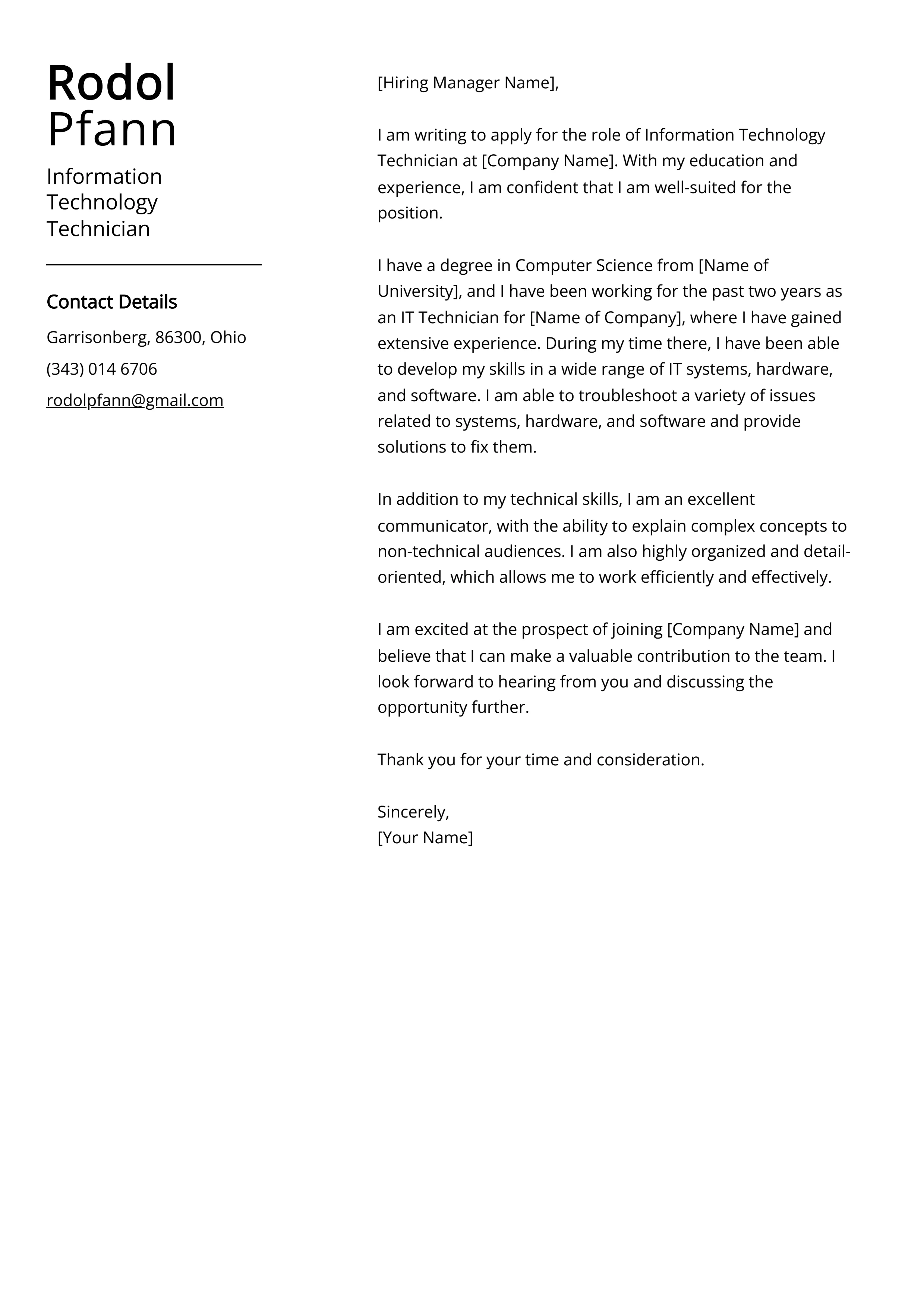
In your cover letter, you should explicitly showcase your technical expertise. List the specific technologies, programming languages, software, and hardware you’re proficient in. Tailor this list to match the requirements of the job, highlighting the skills that align most closely with the position. Explain how you’ve used these skills in previous roles or projects. For example, if you are familiar with cloud computing, you might describe your experience with AWS, Azure, or Google Cloud. Demonstrate your expertise by mentioning specific projects where you leveraged these technologies. You want to show your technical expertise and convince the hiring manager that you are a good fit.
Emphasizing Soft Skills
IT roles require a blend of technical proficiency and soft skills. Highlight your soft skills, such as communication, problem-solving, teamwork, and time management, and provide examples of how you have utilized them. Explain how you’ve effectively communicated technical information to non-technical audiences. Showcase your ability to solve complex problems, work collaboratively with a team, and manage projects effectively. Soft skills are crucial for success in the IT field, demonstrating your ability to work well with others and adapt to various situations. Demonstrating your soft skills is essential for convincing the hiring manager to hire you.
Demonstrating Enthusiasm and Company Fit
Express your genuine enthusiasm for the position and the company. Explain why you are interested in the role and what specifically attracts you to the organization. Show that you understand the company’s mission, values, and culture. Demonstrate that you’ve researched the company and have a clear understanding of its products, services, or goals. Expressing your enthusiasm indicates that you are a motivated and engaged candidate. This can make a big difference in your application.
Writing a Powerful Closing
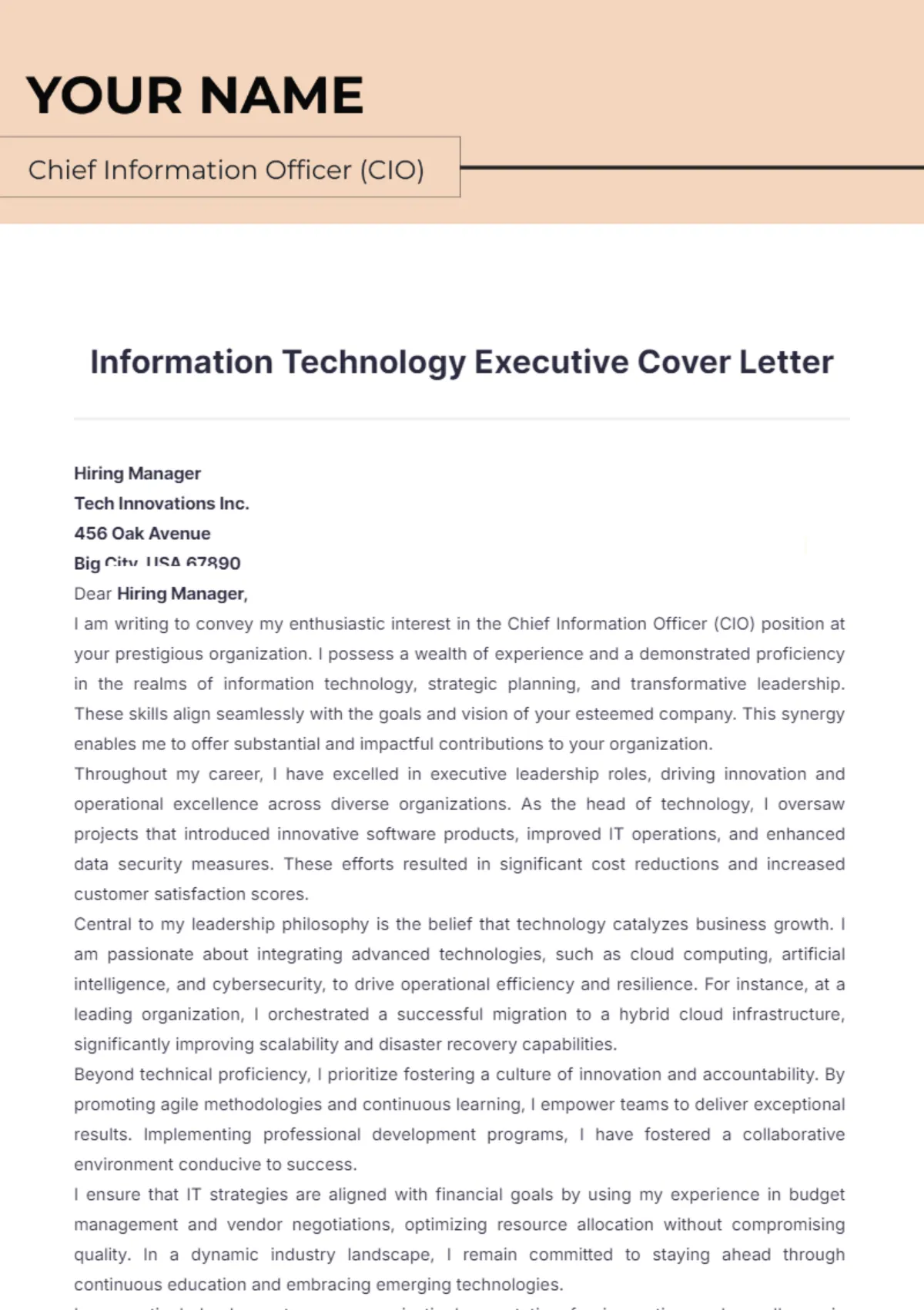
In your closing paragraph, reiterate your interest in the position and thank the hiring manager for their time and consideration. Reiterate your interest and summarize your key qualifications to remind the hiring manager why you’re a strong candidate. Include a clear call to action, such as stating that you are eager to discuss your qualifications in an interview. Provide contact information for easy follow-up. A strong closing leaves a lasting impression and encourages the hiring manager to contact you.
Cover Letter Formatting and Design
The visual presentation of your cover letter is as important as the content. A well-formatted cover letter is easy to read and professional in appearance. Proper formatting reflects your attention to detail and your understanding of professional communication standards. Make sure your cover letter is visually appealing and organized.
Font Choice and Readability
Choose a clear, easy-to-read font such as Times New Roman, Arial, or Calibri. Ensure the font size is between 10 and 12 points for optimal readability. Maintain consistent formatting throughout the document, including consistent spacing, alignment, and font styles. Avoid using overly ornate or distracting fonts. The goal is to make your cover letter easy on the eyes and quick to scan. A professional and readable format creates a good first impression.
Length and Structure
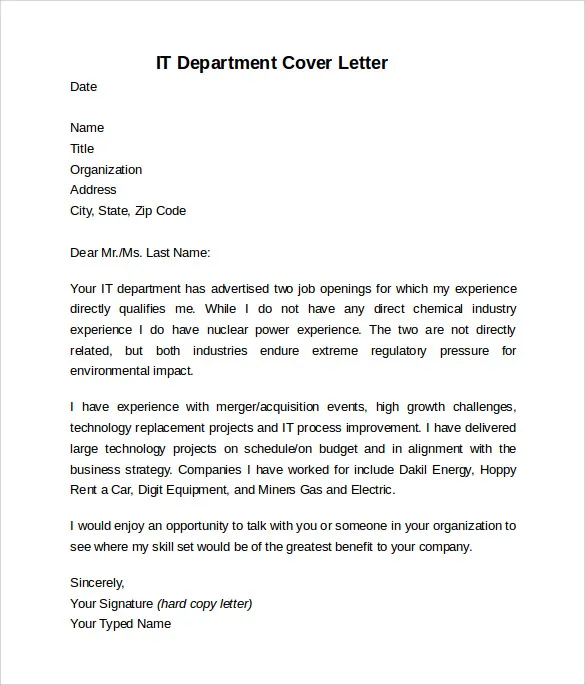
Keep your cover letter concise and focused, ideally no more than one page. Use a clear and logical structure, with well-defined paragraphs and headings. Organize your content into sections that highlight your key skills, experiences, and accomplishments. Use bullet points to break up large blocks of text and make information easier to digest. Proper formatting and an easy-to-follow structure will help the hiring manager quickly understand your key strengths. Organize your paragraphs for clarity and impact.
Common Mistakes to Avoid in Your IT Cover Letter
Avoiding common mistakes can significantly improve the effectiveness of your cover letter. Pay attention to these potential pitfalls to ensure your application stands out for the right reasons.
Generic or Uninspired Content
Avoid using generic phrases or templates that could apply to any job. Tailor your cover letter to the specific role and company. Show that you’ve taken the time to understand the requirements of the job and the company’s mission. A generic cover letter suggests a lack of interest and effort. Personalize your cover letter to demonstrate your enthusiasm and make your application unique. Avoid generic language.
Typos and Grammatical Errors
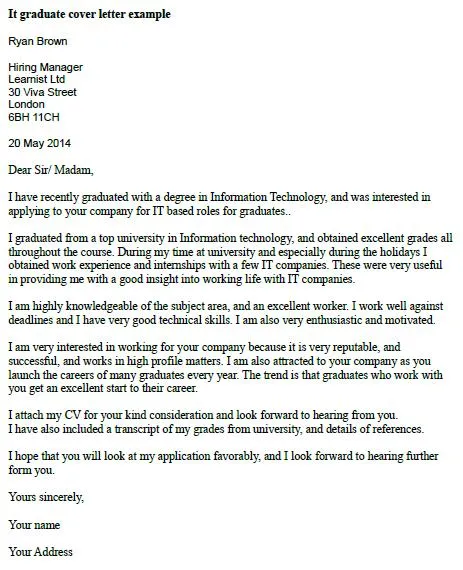
Proofread your cover letter carefully for typos, grammatical errors, and spelling mistakes. These errors can undermine your professionalism and attention to detail. Use spell-check and grammar-check tools, but also review your letter manually. Having a friend or colleague proofread your cover letter can catch errors that you might miss. Proofreading is essential for conveying professionalism.
Ignoring the Job Description
Do not ignore the job description. Carefully review the job description and tailor your cover letter to address the specific requirements and qualifications listed. Highlight the skills and experiences that align with the job description, and use keywords from the posting. Failing to address the job description can make your application seem irrelevant. Tailor your cover letter to match the specific job requirements.
Cover Letter Examples by IT Role
Different IT roles require different sets of skills and experiences. Adapting your cover letter to the specific role demonstrates your understanding of the job’s requirements and your ability to meet them. Here are examples of how to customize cover letters for various IT positions.
IT Support Specialist Cover Letter Example
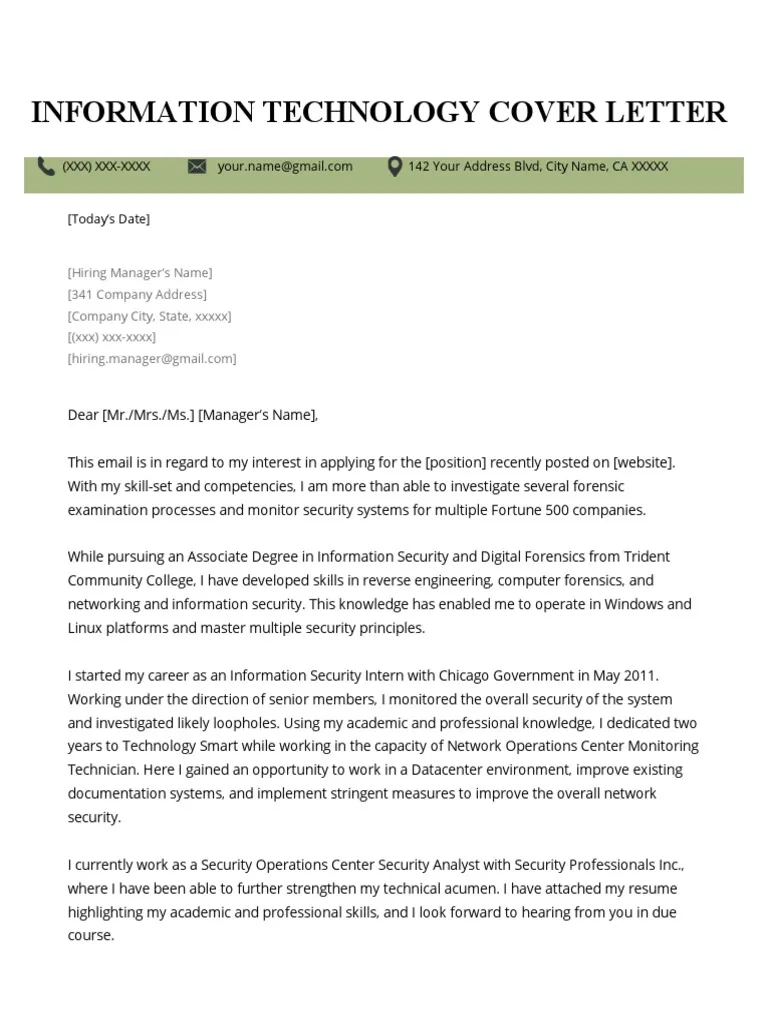
For an IT support specialist, highlight your experience with troubleshooting hardware and software issues, providing technical support, and managing user accounts. Emphasize your communication skills and your ability to explain technical concepts clearly. Mention any experience with help desk software or ticketing systems. This shows a good understanding of customer support. Tailor your cover letter to provide the skills for IT support.
Software Developer Cover Letter Example
For a software developer position, emphasize your programming skills, your experience with specific languages and frameworks, and your project portfolio. Highlight your ability to write clean, efficient code, and to collaborate with other developers. Include links to your projects on GitHub or other platforms. Show your software and programming skills to impress the hiring manager. Also provide any link for your projects.
Network Administrator Cover Letter Example
For a network administrator role, highlight your experience with network design, implementation, and maintenance. Emphasize your knowledge of network protocols, security, and troubleshooting. Mention any certifications, such as Cisco or CompTIA. Showcase your ability to manage and secure network infrastructure. Also, provide any certifications.
Review and Editing Process
The review and editing process is crucial for ensuring your cover letter is polished and effective. Thorough review helps catch any mistakes, refine your message, and ensure your cover letter aligns with the job requirements and showcases your strengths.
Proofreading and Editing Techniques
After writing your cover letter, proofread it carefully to catch any errors. Check for typos, grammatical errors, and formatting inconsistencies. Read your cover letter aloud to catch any awkward phrasing or unclear sentences. Use spell-check and grammar-check tools as a first step, but always review the letter manually. Ensure that the structure is clear and the message is focused. Read your cover letter again and again.
Seeking Feedback from Others
Ask a trusted friend, colleague, or career counselor to review your cover letter. They can provide valuable feedback on your content, clarity, and overall effectiveness. Ask them to assess whether your letter highlights your key qualifications and makes a strong impression. Consider their suggestions and revise your letter accordingly. A fresh perspective can help you improve your cover letter significantly. Receiving feedback is key for improvement.
